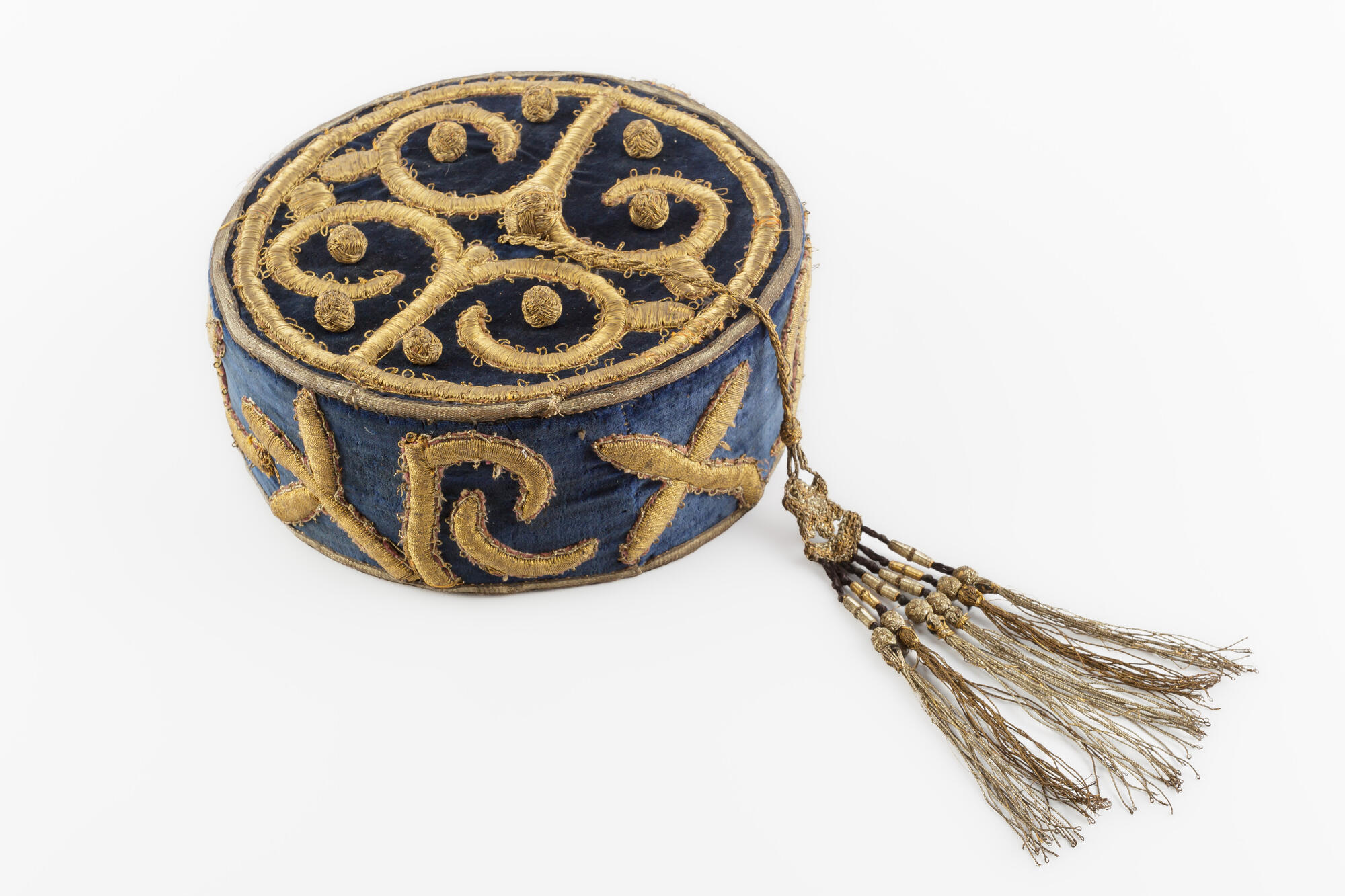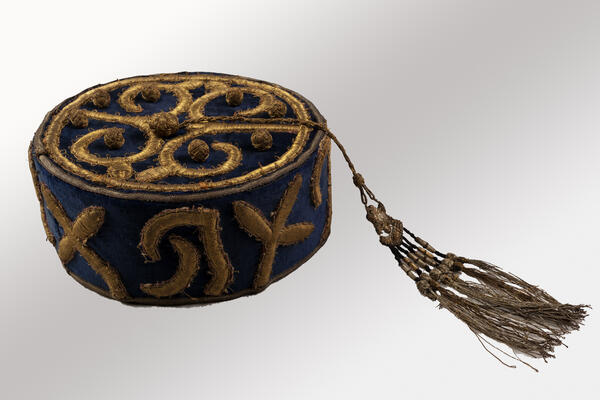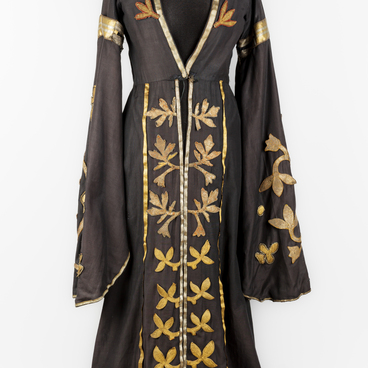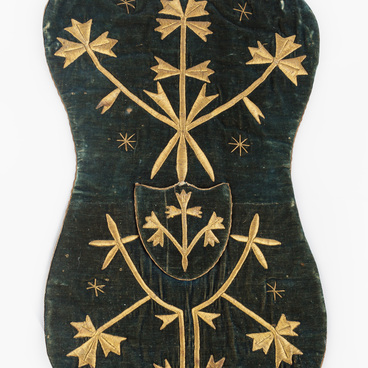The permanent exhibition includes a traditional cap — low, cylindrical, with a flat top. It is richly decorated with floral patterns of stylized leaves, stems and crescents. The cap is embroidered with gold and silver threads in the technique of satin stitch. A stencil was cut out of paper or thin cardboard, sewn onto fabric, and then embroidered with gold or silver threads, securing them with silk along the outline of the pattern. Thus, the stencil turned out to be sewn into the design and was used only once. This made the embroidery look more convex. Sometimes, as in this cap, the contours were outlined with thin braid.
An additional decoration of the headdress is a long fringe brush with weaving in the form of a star and a crescent and six short strings of beads. A ball of hard cord is used to attach it to the cap. Such balls were often used as fasteners, and they could also replace expensive silver finials of women’s headdresses.
A small fabric cap is an integral part of the Adyghe women’s costume. It has been part of the women’s and girls’ garment since ancient times. Back in the Middle Ages, beautiful women wore high pointed hats. Over time, the number of styles increased: cone-shaped, small and semicircular caps, and high caps with a flat top had emerged. All caps, regardless of style, were created on a solid base so that the headdress had a clear shape. Linings were made from leather or fabric. The ornament had a certain sacred meaning. Therefore, craftswomen chose the pattern for embroidery very carefully. Initially, landscapes and wild animals were preferred, but over time the images became schematic, turning into a set of symbols and lines. Many scientists associate these symbols with the cult of the sun that was especially revered by many peoples in the past.
A scarf or a headscarf was a mandatory additional accessory to the cap. A scarf was either worn over the cap to cover the shoulders and back, while the ends were left in front, or attached to the top of the headdress — to the ball — so that the fabric freely descended along the back. Also, an Adyghe girl could cross the ends of the scarf under her chin and fasten them to the top of the cap.
The exhibit was handed over to the museum in 1972 by a resident of the village of Ponezhukai K.T. Tlekhuray.
An additional decoration of the headdress is a long fringe brush with weaving in the form of a star and a crescent and six short strings of beads. A ball of hard cord is used to attach it to the cap. Such balls were often used as fasteners, and they could also replace expensive silver finials of women’s headdresses.
A small fabric cap is an integral part of the Adyghe women’s costume. It has been part of the women’s and girls’ garment since ancient times. Back in the Middle Ages, beautiful women wore high pointed hats. Over time, the number of styles increased: cone-shaped, small and semicircular caps, and high caps with a flat top had emerged. All caps, regardless of style, were created on a solid base so that the headdress had a clear shape. Linings were made from leather or fabric. The ornament had a certain sacred meaning. Therefore, craftswomen chose the pattern for embroidery very carefully. Initially, landscapes and wild animals were preferred, but over time the images became schematic, turning into a set of symbols and lines. Many scientists associate these symbols with the cult of the sun that was especially revered by many peoples in the past.
A scarf or a headscarf was a mandatory additional accessory to the cap. A scarf was either worn over the cap to cover the shoulders and back, while the ends were left in front, or attached to the top of the headdress — to the ball — so that the fabric freely descended along the back. Also, an Adyghe girl could cross the ends of the scarf under her chin and fasten them to the top of the cap.
The exhibit was handed over to the museum in 1972 by a resident of the village of Ponezhukai K.T. Tlekhuray.



